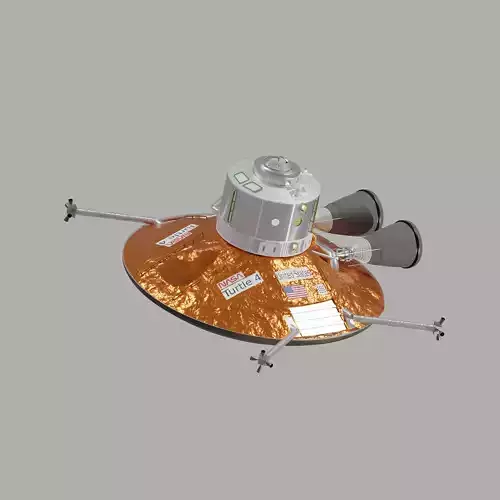1/14
The Turtle was a family of crewed and heavy cargo Orbital Transfer Vehicles (OTVs) studied by Eagle Engineering Incorporated and NASA's Johnson Space Center in the mid 1980s, to support human flights to geosynchronous orbit, the moon, and Mars. It consisted of circular heat shield, which was integral to the primary structure, a hydrolox propulsion system for maneuvering, and (in the crewed configuration) a habitat module large enough to support 4-6 astronauts for several days. Aerobraking would be used wherever possible, greatly reducing the delta v that had to be propulsively performed and allowing full reuse with a modestly sized yet highly capable vehicle. The main engine nozzles as well as the boom-mounted reaction control system pods would retract for protection during atmospheric flight. Lunar missions would make use of a cargo variant that could deliver a separate lander to lunar orbit (the lander would make use of shared propulsion and crew systems with the OTV itself to reduce costs), and Mars flights would be supported by a larger, mostly expendable, transfer stage and habitat along with a lander. Launch would be performed by a Shuttle-derived heavy lift vehicle, servicing and refueling would take place at Space Station Freedom or a co-orbital platform, and most payload elements (including the basic crew cabin) were sized for launch on the Shuttle.
All materials and textures are packed into the .blend file. Unapplied modifiers and instancing have been used to reduce file size and enable easy editing.
REVIEWS & COMMENTS
accuracy, and usability.














